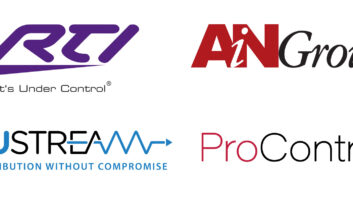HomePlug-equipped home-audio products, security cameras and broadband modems will likely be available to dealers in the second half, following the recent launches of routers and “wall-wart” HomePlug adapters, said Tom Reed, president of the HomePlug Powerline Alliance.
In a separate development, The HomeRF Working Group disbanded earlier this month and is no longer developing or promoting the HomeRF wireless-network specification. Siemens, a strong HomeRF advocate, and Motorola said they are dropping their support for the spec.
At HomePlug’s CES exhibit, Reed told TWICE that reference designs are available now for suppliers to offer home audio products such as minisystems that stream Internet radio stations via a built-in 14Mbps HomePlug connection from HomePlug-equipped cable and DSL modems. Home audio suppliers, including Philips and Yamaha, have used built-in Wi-Fi 802.11b, and other audio companies, such as Kenwood, have adopted HomePNA phone-line networking.
Also at the show, Cogency Semiconductor teamed up with chip/software developer ViXS to demonstrate multizone video streaming over powerlines. ViXS also demonstrated its network-agnostic technology over 802.11b and 802.11a networks. Their combined technologies could appear in future products, but in the meantime, retailers have a growing number of HomePlug products to offer today.
The latest crop of HomePlug products available since late last year and mid-January include products from Siemens and Phonex, said Reed.
To offer an alternative, ViXS went to CES to demonstrate proprietary technology that rides over HomePlug and wireless 802.11a and 802.11b networks to deliver broadcast quality video. ViXs-equipped HomePlug and 802.11b A/V servers could simultaneously stream two to four standard-definition MPEG-1 and -2 streams at a guaranteed 30fps to clients equipped with standard HomePlug and 802.11b technology, said marketing director Ciricia Proulx.
In related networking developments, the HomeRF Working Group, formed in 1998, disbanded earlier this month and is no longer developing or promoting the HomeRF wireless-network specification.
Suppliers are dropping HomeRF because of competition from lower cost 802.11b networking devices, which enjoyed a price advantage because of a high rate of adoption by enterprises. “The pickup [of Siemens HomeRF devices] wasn’t strong,” a Siemens spokesperson admitted.













